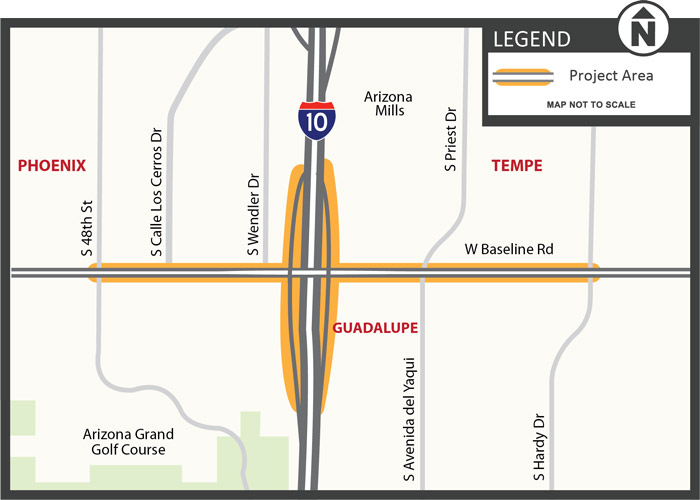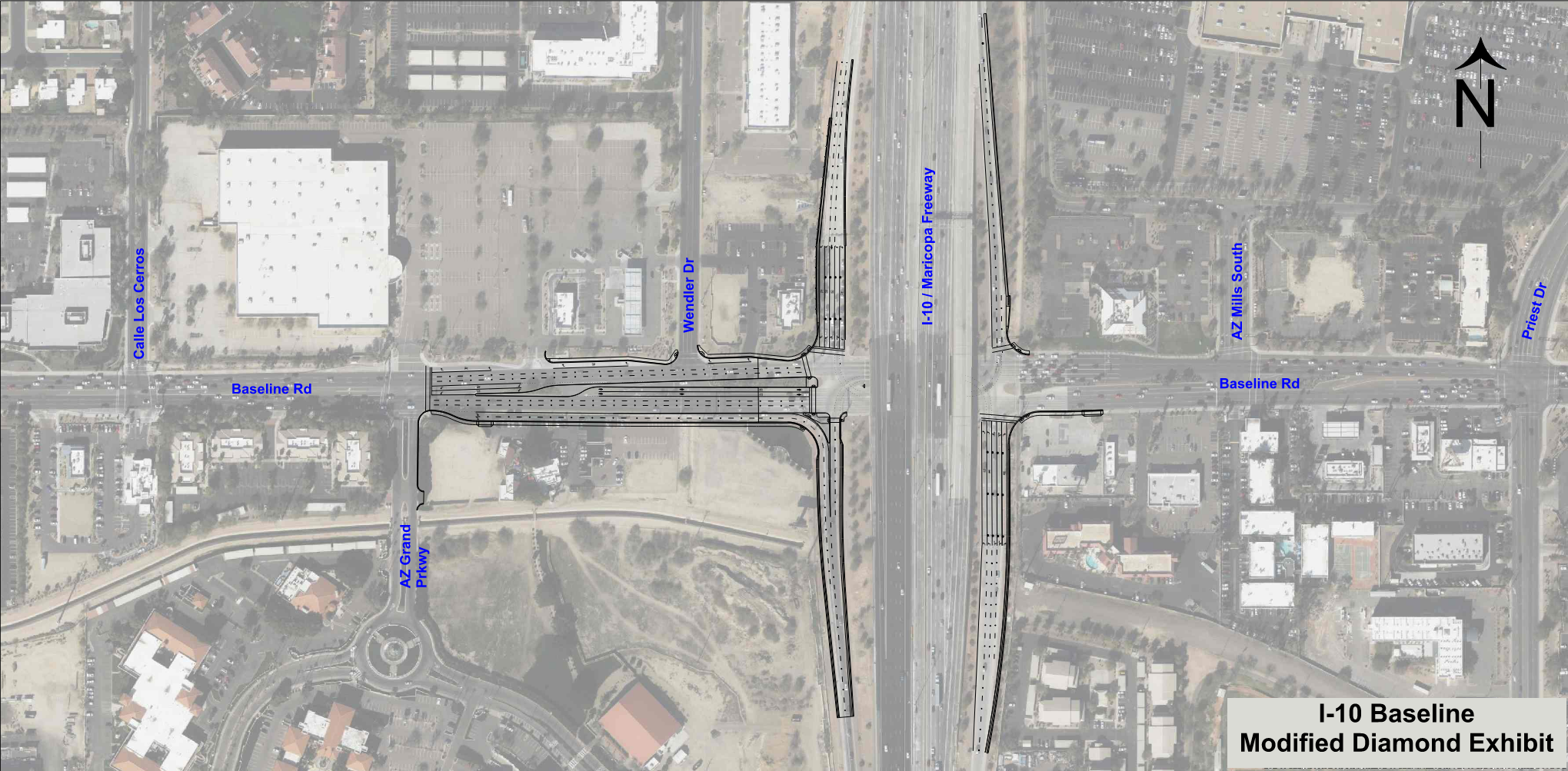Overview
The Arizona Department of Transportation (ADOT) is studying potential improvements to traffic flow and safety at the I-10/Baseline Road traffic interchange.
Due to the high traffic volume and congestion in the area, the current interchange design may no longer be adequate to meet the needs of the traveling public. The study is evaluating three design alternatives for the interchange: a Modified Diamond Interchange (MDI), a Diverging Diamond Interchange (DDI) and a No Build Alternative. The two build alternatives would enhance regional travel at the interchange.
In Dec. 2024, the Arizona Department of Transportation (ADOT) has selected the Modified Diamond Interchange Alternative (MDI) as the preferred design alternative for reconstruction of the Interstate 10/Baseline Road traffic interchange as part of the current study. ADOT has published the Design Concept Report (DCR), which includes the conceptual design and justification for selection of the MDI alternative. You can view the DCR by clicking here and other study information on the project website below.
However, given that community and municipal stakeholders have expressed significant concerns on the proposed access changes at Wendler Drive as part of the preferred MDI design alternative, final design and construction will not proceed at this time
Project Area Map

Study Timeline
Public Scoping Meeting - May 9, 2023
Public Meeting for Design Alternatives - Aug. 8, 2024
Completed Study - Dec. 2024
Final Design - TBD
Construction - The project is not currently funded for construction.
Selected Alternative: Modified Diamond Interchange (MDI)
The existing I-10/Baseline Road Interchange is a Tight Diamond Interchange, also known as a Compact Diamond Interchange. It is the most commonly used interchange type for freeway connections to local roads, and many of the existing interchanges within Maricopa County use this design.
The MDI alternative would keep the interchange and ramp configuration as they are, while adding some modifications to improve traffic operations, including adding new right turn lanes on Baseline Road at I-10 and additional lanes on the exit and entrance ramps. This alternative also includes the removal of the traffic signal at Wendler Drive and revising access to be right-in, right-out. This will improve the flow of traffic on Baseline Road. This alternative would have a smaller footprint than the DDI alternative, and would impact fewer existing properties. The MDI would also be less expensive than the DDI.

(Modified Diamond Interchange Alternative)
Aug. 8, 2024 Virtual Public Meeting
The Arizona Department of Transportation (ADOT) held a virtual public meeting on Aug. 8 at 6 p.m. for the public to learn about and provide input on the design alternatives to improve the I-10/Baseline Road traffic interchange. These improvements are being planned in coordination with the cities of Tempe and Phoenix, and the town of Guadalupe.
Documents
Virtual Public Meeting Recordings
May 9, 2023 Virtual Public Meeting
Other Study Documents
Stay Informed


Please subscribe to receive project updates by email.
ADOT welcomes your questions and comments. Please contact us in any of these ways:
- Phone: ADOT Project Information Line: 855.712.8530
- Email: [email protected]
- Mail: ADOT Communications, 1655 W. Jackson St., MD 126F, Phoenix, AZ 85007




